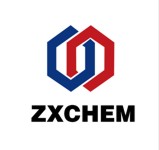|
|
|

|
Suppliers for
Pivaloyl chloride
|
Properties | | CAS |
3282-30-2 | | Formula |
C5H9ClO | | EINECS |
221-921-6 |

|
|
21 Registered suppliers
| Appearance | Colorless transparent liquid
| | Assay | ≥ 99 %
| | Trimethylacetic Acid | < 0.5%
| | Trimethylacetic Anhydride | < 0.5%
| | Density | 0.980-0.981(20℃ ) |
| Appearance | Colorless transparent liquid
| | Assay | ≥ 99 %
| | Trimethylacetic Acid | < 0.5%
| | Trimethylacetic Anhydride | < 0.5%
| | Density | 0.980-0.981(20℃ ) |
| Product Name | Pivaloyl chloride
| | Synonyms | 2,2-dimethyl-propanoylchlorid; Acetyl chloride, trimethyl-;
neopantanoyl chloride; Pivalolyl chloride; pivaloyl; Propanoylchloride,2,2-dimethyl-;
Pyvaloylchloride;
| | CAS | 3282-30-2
| | Product Categories | Acid Halides; Building Blocks;Carbonyl Compounds; Chemical Synthesis; Organic Building Blocks
| Chemical Properties
| | mp | -56 °C
| | bp | 105-106 °C(lit.)
| | density | 0.980 g/mL at 20 °C
| | vapor density | > 1 (vs air)
| | vapor pressure | 36 mm Hg ( 20 °C)
| | refractive index | n20/D 1.412(lit.)
| | Fp | 48 °F
| | storage temp. | Store at RT.
| | Water Solubility | Hydrolysis
| | Sensitive | Moisture Sensitive
| Safety Information
| | Hazard Codes | F,T+,T
| | Risk Statements | 11-14-22-26-34-23
| | Safety Statements | 16-26-36/37/39-45-38-28A
| | Chemical Properties | Colorless to yellow liquid
| Usage Widely used N-acylating agent for amines,1 Schiff bases,2 and pyrrolidinones3 as well as O-acylating agent for alcohols,4 lactones,5 and saccharides. 6
| | General Description | Colorless fuming liquid with a pungent odor.
| | Boiling point | 105-106°F.
| | Density | 0.979 g / cm3.
| | Flash Point | 48°F (8°C).
| | Very toxic by inhalation, ingestion or skin absorption. Fumes irritate the eyes and mucous membranes. Corrosive to most metals and tissue. |
| Product Name | Pivaloyl chloride
| | Synonyms | 2,2-dimethyl-propanoylchlorid; Acetyl chloride, trimethyl-;
neopantanoyl chloride; Pivalolyl chloride; pivaloyl; Propanoylchloride,2,2-dimethyl-;
Pyvaloylchloride;
| | CAS | 3282-30-2
| | Product Categories | Acid Halides; Building Blocks;Carbonyl Compounds; Chemical Synthesis; Organic Building Blocks
| Chemical Properties
| | mp | -56 °C
| | bp | 105-106 °C(lit.)
| | density | 0.980 g/mL at 20 °C
| | vapor density | > 1 (vs air)
| | vapor pressure | 36 mm Hg ( 20 °C)
| | refractive index | n20/D 1.412(lit.)
| | Fp | 48 °F
| | storage temp. | Store at RT.
| | Water Solubility | Hydrolysis
| | Sensitive | Moisture Sensitive
| Safety Information
| | Hazard Codes | F,T+,T
| | Risk Statements | 11-14-22-26-34-23
| | Safety Statements | 16-26-36/37/39-45-38-28A
| | Chemical Properties | Colorless to yellow liquid
| Usage Widely used N-acylating agent for amines,1 Schiff bases,2 and pyrrolidinones3 as well as O-acylating agent for alcohols,4 lactones,5 and saccharides. 6
| | General Description | Colorless fuming liquid with a pungent odor.
| | Boiling point | 105-106°F.
| | Density | 0.979 g / cm3.
| | Flash Point | 48°F (8°C).
| | Very toxic by inhalation, ingestion or skin absorption. Fumes irritate the eyes and mucous membranes. Corrosive to most metals and tissue. |
| Product Name | Pivaloyl chloride
| | Synonyms | 2,2-dimethyl-propanoylchlorid; Acetyl chloride, trimethyl-;
neopantanoyl chloride; Pivalolyl chloride; pivaloyl; Propanoylchloride,2,2-dimethyl-;
Pyvaloylchloride;
| | CAS | 3282-30-2
| | Product Categories | Acid Halides; Building Blocks;Carbonyl Compounds; Chemical Synthesis; Organic Building Blocks
| Chemical Properties
| | mp | -56 °C
| | bp | 105-106 °C(lit.)
| | density | 0.980 g/mL at 20 °C
| | vapor density | > 1 (vs air)
| | vapor pressure | 36 mm Hg ( 20 °C)
| | refractive index | n20/D 1.412(lit.)
| | Fp | 48 °F
| | storage temp. | Store at RT.
| | Water Solubility | Hydrolysis
| | Sensitive | Moisture Sensitive
| Safety Information
| | Hazard Codes | F,T+,T
| | Risk Statements | 11-14-22-26-34-23
| | Safety Statements | 16-26-36/37/39-45-38-28A
| | Chemical Properties | Colorless to yellow liquid
| Usage Widely used N-acylating agent for amines,1 Schiff bases,2 and pyrrolidinones3 as well as O-acylating agent for alcohols,4 lactones,5 and saccharides. 6
| | General Description | Colorless fuming liquid with a pungent odor.
| | Boiling point | 105-106°F.
| | Density | 0.979 g / cm3.
| | Flash Point | 48°F (8°C).
| | Very toxic by inhalation, ingestion or skin absorption. Fumes irritate the eyes and mucous membranes. Corrosive to most metals and tissue. |
| Product Name | Pivaloyl chloride
| | Synonyms | 2,2-dimethyl-propanoylchlorid; Acetyl chloride, trimethyl-;
neopantanoyl chloride; Pivalolyl chloride; pivaloyl; Propanoylchloride,2,2-dimethyl-;
Pyvaloylchloride;
| | CAS | 3282-30-2
| | Product Categories | Acid Halides; Building Blocks;Carbonyl Compounds; Chemical Synthesis; Organic Building Blocks
| Chemical Properties
| | mp | -56 °C
| | bp | 105-106 °C(lit.)
| | density | 0.980 g/mL at 20 °C
| | vapor density | > 1 (vs air)
| | vapor pressure | 36 mm Hg ( 20 °C)
| | refractive index | n20/D 1.412(lit.)
| | Fp | 48 °F
| | storage temp. | Store at RT.
| | Water Solubility | Hydrolysis
| | Sensitive | Moisture Sensitive
| Safety Information
| | Hazard Codes | F,T+,T
| | Risk Statements | 11-14-22-26-34-23
| | Safety Statements | 16-26-36/37/39-45-38-28A
| | Chemical Properties | Colorless to yellow liquid
| Usage Widely used N-acylating agent for amines,1 Schiff bases,2 and pyrrolidinones3 as well as O-acylating agent for alcohols,4 lactones,5 and saccharides. 6
| | General Description | Colorless fuming liquid with a pungent odor.
| | Boiling point | 105-106°F.
| | Density | 0.979 g / cm3.
| | Flash Point | 48°F (8°C).
| | Very toxic by inhalation, ingestion or skin absorption. Fumes irritate the eyes and mucous membranes. Corrosive to most metals and tissue. |
Molecular Formula: C5H9ClO Molecular Weight: 120.58 Hazard Symbols: F,T+,T UN Number: UN 2438 6.1/PG 1 WGKGermany: 1 PackingGroup: I HS Code: 29159080
More details are to be found here
Molecular Formula: C5H9ClO Molecular Weight: 120.58 Hazard Symbols: F,T+,T UN Number: UN 2438 6.1/PG 1 WGKGermany: 1 PackingGroup: I HS Code: 29159080
More details are to be found here
Molecular Formula: C5H9ClO Molecular Weight: 120.58 Hazard Symbols: F,T+,T UN Number: UN 2438 6.1/PG 1 WGKGermany: 1 PackingGroup: I HS Code: 29159080
More details are to be found here
Molecular Formula: C5H9ClO Molecular Weight: 120.58 Hazard Symbols: F,T+,T UN Number: UN 2438 6.1/PG 1 WGKGermany: 1 PackingGroup: I HS Code: 29159080
More details are to be found here
Molecular Formula: C5H9ClO Molecular Weight: 120.58 Hazard Symbols: F,T+,T UN Number: UN 2438 6.1/PG 1 WGKGermany: 1 PackingGroup: I HS Code: 29159080
More details are to be found here
Molecular Formula: C5H9ClO Molecular Weight: 120.58 Hazard Symbols: F,T+,T UN Number: UN 2438 6.1/PG 1 WGKGermany: 1 PackingGroup: I HS Code: 29159080
More details are to be found here
Molecular Formula: C5H9ClO Molecular Weight: 120.58 Hazard Symbols: F,T+,T UN Number: UN 2438 6.1/PG 1 WGKGermany: 1 PackingGroup: I HS Code: 29159080
More details are to be found here
Molecular Formula: C5H9ClO Molecular Weight: 120.58 Hazard Symbols: F,T+,T UN Number: UN 2438 6.1/PG 1 WGKGermany: 1 PackingGroup: I HS Code: 29159080
More details are to be found here
More details are to be found here
More details are to be found here
More details are to be found here
More details are to be found here
More details are to be found here
|
|
|
Privileged suppliers
Last update 2024-05-31
|



 details
details details
details details
details
_Co_Ltd_1_575.jpg)







